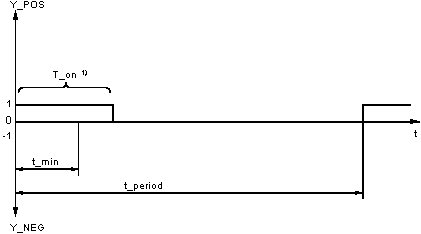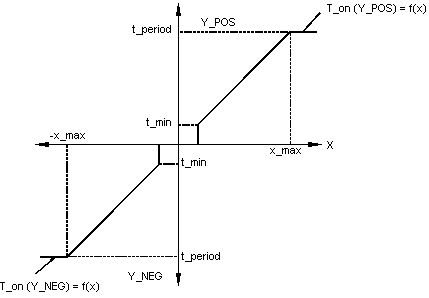The period determines the time, in which the actuating pulses (1-signal on output Y_POS or Y_NEG) are regularly output, i.e. in a constant time-slot pattern.
The parameter
t_min specifies the minimum pulse length, i.e. the shortest time span for which the output
Y_POS or
Y_NEG should carry 1-signal. If the length of the pulse calculated according to the equation in the section
Pulse length formulas for Y_POS and Y_NEG is shorter than
t_min, then there will be no pulse throughout the whole period.
An overview of the ratio between times is shown in the following diagram:
The parameters x_max mark the point of input variable X, with which the output Y_POS would continuously carry a 1-signal, when the input variable X is positive.
The dependency of the time duration in which the output Y_POS (Y_NEG) carries a 1-signal; the input variable X is illustrated in the following diagram:
In reset mode R = 1, outputs Y_POS and Y_NEG are set to "0" signal. The internal time meters are also standardized, so that the function block begins the transfer to R=0 with the output of a new 1 signal on the associated output.
If the QPWM block is operated together with a PID controller, then the period t_period should be so selected, that it corresponds to the PID controllerís scan time. It is then guaranteed that every new actuating signal from the PID controller within the period time can be fully processed.
The QPWM scan time should be in proportion with the period vs. pulse time. The smallest possible actuating pulse is determined this way.
The following ratio is recommended:


